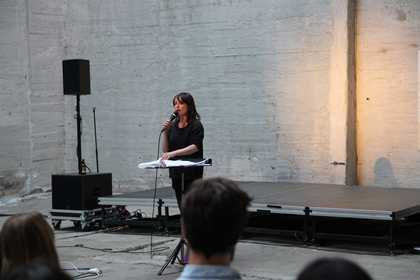A seminal structuralist film, The Flicker emphasises the manner in which film conveys meaning through the use of codes and conventions, something that finds a parallel in Tompkins use of language and narrative in performance which she has described as ‘a process of layering’ through which ideas are obscured and revealed.
Tony Conrad (1940-2016) was an American avant-garde video artist, experimental filmmaker, musician, composer, sound artist, teacher, and writer. In 1966 he made his first film The Flicker which is regarded as a landmark in structural film making. The film consists of alternating positive and negative film stock, producing a black and white flicker effect when projected. He approached the film by considering the relationship between the subjective psychological conditions of the flicker, and its relation to narrative and storytelling. He says, "I had felt that my own experience with flicker was a transporting experience in the way that movies affect the imagination at their best by sweeping one away from reality into a completely different psychic environment."
Sue Tompkins b.1971 is an artist who works across text, painting and performance and is perhaps best known for her performance works. To make these works Tompkins collects fragments of text, snippets of overheard conversations and lyrics from pop songs over a period of months, typing them on individual sheets of paper, editing and filing the loose leaves in a binder until she considers the piece finished. The compiled text is then performed in her distinctive rhythmical and hypnotic manner, words are given resonance through repetition, juxtaposition and Tompkins unique physical style of delivery, evoking both personal and political associations.
Please note: due to the flashing lights in this film, it may not be suitable for people with epilepsy.

